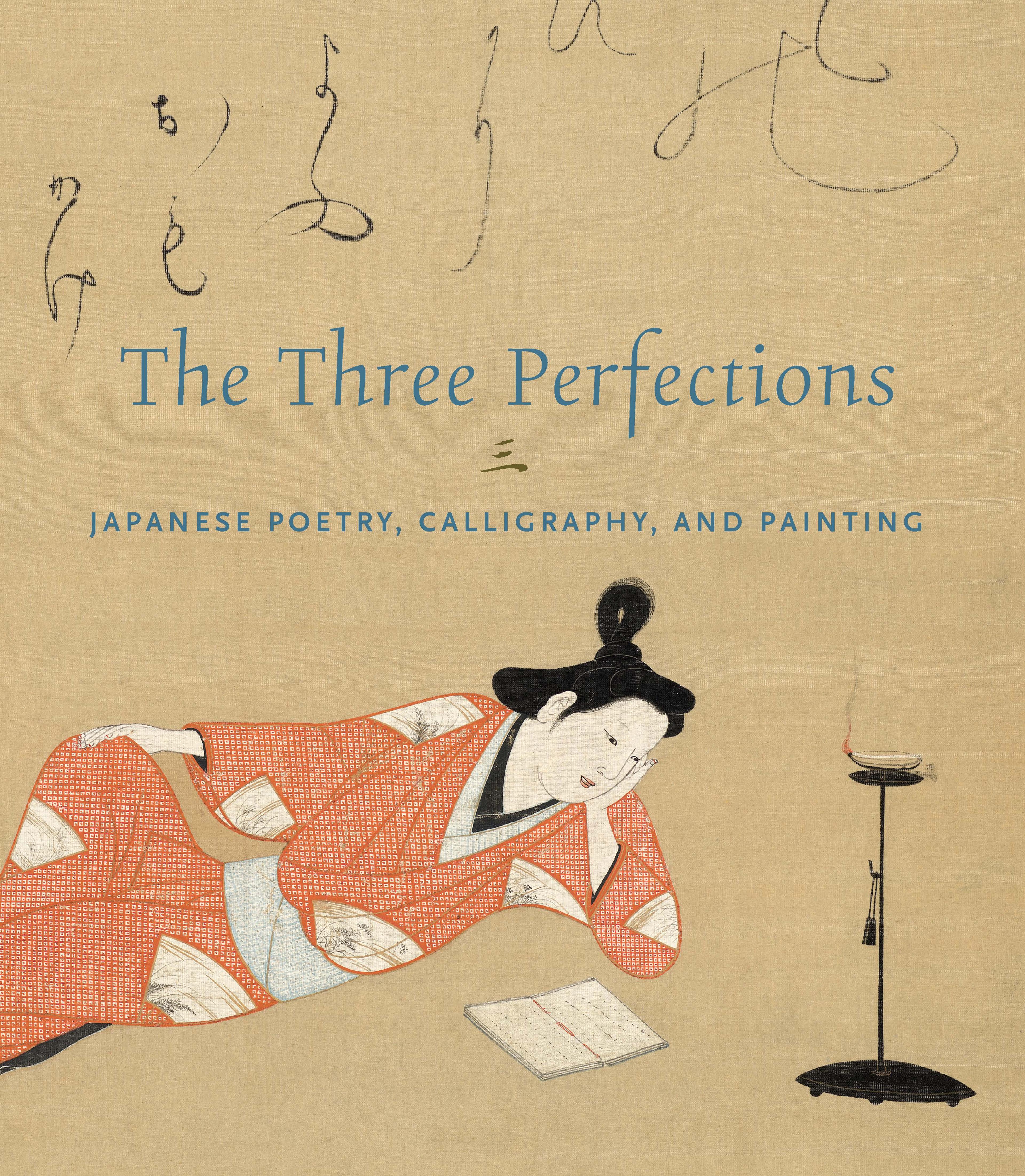Hokku on “New Year’s Crow,” with a Painting of a Courtier
After the death of the poet-painter Yosa Buson, his pupil Matsumura Gekkei (who used the alias Go Shun when creating Chinese-style paintings) was asked to authenticate surviving examples of his master’s handwriting. On the narrow slip of paper placed at the far right of this scroll, Buson had inscribed a hokku (seventeen-syllable poem) alluding to the tradition of welcoming the crow’s first caw as a harbinger of spring and the New Year.
At left, Gekkei added a playful portrait of Tachibana no Suemichi, a poet from the Heian period (794–1185) whom Buson had often depicted after having a peculiar New Year’s dream about him. The hokku reads:
己か羽の 文字もよめたり 初烏
I, too, can read
the characters on the feathers
of the year’s first black crow.
At left, Gekkei added a playful portrait of Tachibana no Suemichi, a poet from the Heian period (794–1185) whom Buson had often depicted after having a peculiar New Year’s dream about him. The hokku reads:
己か羽の 文字もよめたり 初烏
I, too, can read
the characters on the feathers
of the year’s first black crow.
Artwork Details
- 与謝蕪村筆 「初烏」句 松村月渓(呉春)筆 老翁図
- Title: Hokku on “New Year’s Crow,” with a Painting of a Courtier
- Artist: Inscription by Yosa Buson (Japanese, 1716–1783)
- Artist: Colophon by Matsumura Goshun (Japanese, 1752–1811)
- Period: Edo period (1615–1868)
- Date: ca. mid-1780s
- Culture: Japan
- Medium: Hanging scroll: ink and color on paper
- Dimensions: Image: 7 9/16 × 13 1/8 in. (19.2 × 33.3 cm)
Overall with mounting: 44 15/16 × 17 15/16 in. (114.1 × 45.6 cm)
Overall with knobs: 44 15/16 × 20 3/4 in. (114.1 × 52.7 cm) - Classification: Paintings
- Credit Line: Mary and Cheney Cowles Collection, Gift of Mary and Cheney Cowles, 2023
- Object Number: 2023.583.21
- Curatorial Department: Asian Art
More Artwork
Research Resources
The Met provides unparalleled resources for research and welcomes an international community of students and scholars. The Met's Open Access API is where creators and researchers can connect to the The Met collection. Open Access data and public domain images are available for unrestricted commercial and noncommercial use without permission or fee.
To request images under copyright and other restrictions, please use this Image Request form.
Feedback
We continue to research and examine historical and cultural context for objects in The Met collection. If you have comments or questions about this object record, please contact us using the form below. The Museum looks forward to receiving your comments.
